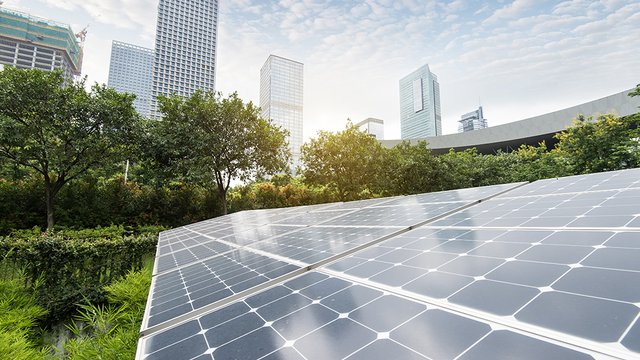Significant action against climate change is required in order to avoid the worst of its effects. According to a 2018 report by the United Nations’ Intergovernmental Panel on Climate Change, we have to reduce our carbon emissions to zero by 2050 to keep global temperatures from rising more than 1.5 degrees Celsius. To reach that goal, we must start taking action far earlier by cutting emissions in half by 2030.
Modern life with all of its technology and infrastructure is convenient, though the fossil fuels that provide us the energy for this lifestyle are the main cause of climate change. Nowhere is this more apparent than our biggest urban centers. While there is a lot of work that needs to be done fast, thankfully some cities are taking steps in the right direction.

(Image: kankyo.metro.tokyo.lg.jp)
Tokyo is one of the world’s largest metropolitan areas. It has millions of residents as well as a convenient, fast-paced lifestyle. The city is heavily dependent on its transportation system and infrastructure. As a coastal area, it is also a potential target for future climate related disasters.
##The vision for Zero Emission Tokyo
In late 2019, the Tokyo Metropolitan Government announced its “Zero Emission Tokyo” plan to help reach the goal of reaching zero emissions worldwide by 2050. This ambitious strategy focuses on 14 different objectives spread across six categories. These include focusing more on renewable energy and developing a more sustainable urban infrastructure with zero emission buildings and vehicles.

Six categories to promote the initiatives (Image: kankyo.metro.tokyo.lg.jp)
Each category of the Zero Emission Tokyo plan has specific milestones to be achieved by 2030. Goals related to zero emission vehicles, for example, involve increasing market share to 50% and having 300 or more electric buses in the Tokyo area. Japanese automotive manufacturer Nissan has already announced the development of a zero emission ambulance to be used by the Tokyo Fire Department.
Targets for other categories include increasing renewable power usage to 30%, increasing Tokyo’s recycling rate to 37% and reducing single use plastic consumption by 25%. As Japan has also seen more severe rainfall and typhoons, disaster preparation and structural maintenance of reservoirs are also parts of the strategy.

(Image: kankyo.metro.tokyo.lg.jp)
Taking the lead in the fight against a global crisis
We are already feeling some of the negative impacts of climate change, with record temperatures and more extreme weather. Without large-scale, ambitious action, global warming will only continue to get worse. Zero Emission Tokyo provides a comprehensive framework for the city to do its share in fighting the climate crisis. If Tokyo can truly commit to and achieve its goals, it can set an example for the rest of Japan, as well as the rest of the world.

(Image: Shutterstock)
(This article was originally published on Zenbird Media.)
Additional Resources
Zenbird Media Homepage
More news on climate change
More articles about energy here